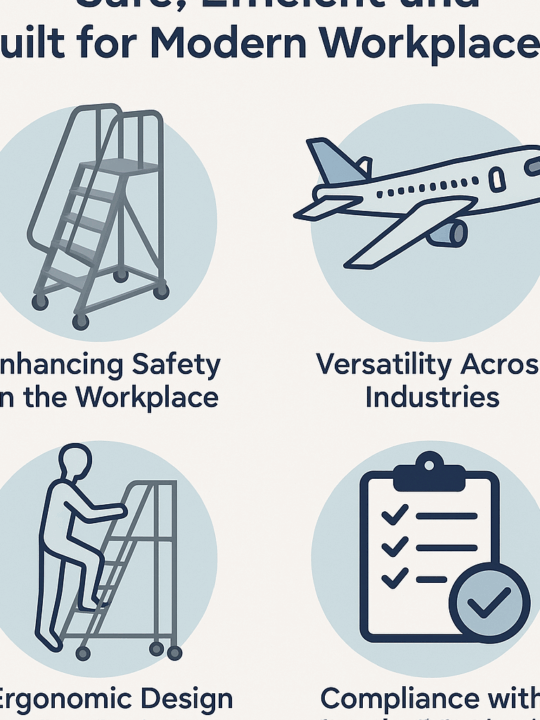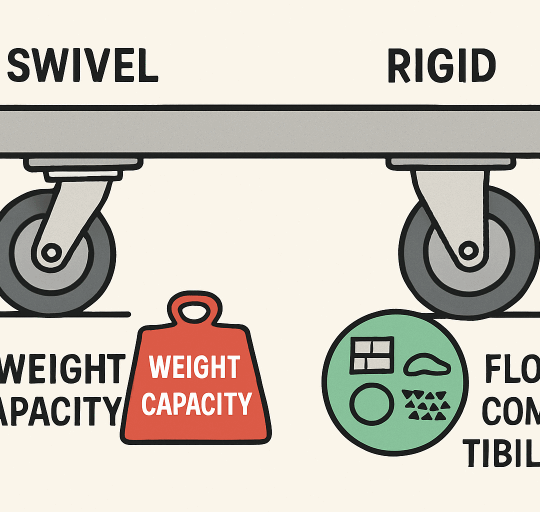
The growth of the business is something that every entrepreneur hopes for. After spending likely months or years trying to get things right in order for growth to take hold and sustain, when it does occur, it is likely met with shock and slight numbness. But after this feeling ebbs and the success continues, the very next feeling to take hold is one of riding the success and never letting it escape.
But things will get challenging because the elements that create success can be elusive and hard to define. In fact they can often seem like magic. Smart entrepreneurs know however that the magic is in the hard work and in the multiple times you got it wrong before finally getting it right. Paying attention to things and making better decisions leads to success, and doing this consistently leads to continued success.
So in spite of the continuous hard work that you need to focus on now, you also need to take some time to really understand what you got right and to ensure that this keeps going. Perhaps the employee group you have is ideal or maybe your products and services are resonating perfectly with customers, or even that your level of intervention in the company is just perfect. If you are not quite sure and even if you are, you need information resources to help you understand what is going right and to keep it going, a website like My Emma can provide everything you need. It is also time to look at what comes next and for you to get prepared to move toward that successful future.
For successful franchise owners and small businesses, the question that will inevitably come up is, “Is it time to open a second location?”
Whether it’s opening a new retail location, a new office in a new town, or going online, there are several things to consider when managing businesses with multiple locations.
Today, we’ll discuss the challenges of managing multiple locations as well as tips that will benefit your marketing and management efforts.
Table of Contents
How to manage multiple business units
When considering opening multiple locations for your business, ask yourself the following questions first:
Have you fully optimized your existing location?
Before you decide to put your logo on a new location, explore your options. Expansion doesn’t always have to mean a new location.
As you approach the decision to open up a new location, consider the following:
- If you’re looking to serve more customers, think about renovating or acquiring property adjacent to your existing location to fit more customers.
- Look into new ways to expand your business, like delivery, offering mobile services, or extending operating hours.
- If you’re concerned about lagging traffic in your existing location, consider marketing to different demographics with targeted campaigns and offers to get them through the door. It’s beneficial to understand different multi-location marketing strategies like franchise email marketing.
- While many don’t think of their web presence as a second location, it can be a viable alternative to opening up a second physical location. However, it also presents many of the same considerations. Launching a website or using a platform like Shopify or Etsy, includes upfront costs (web hosting, design, and development, promotion). Once launched, you’ll need to manage the long-term care and feeding (security, content management, updates) of your web properties.
- Gauge the demand for your product or service in the areas that you’re considering. You don’t want to risk opening up a new location that could potentially cannibalize your existing location.
Have you done your legwork?
Don’t decide to expand on a whim. Take the time to do the legwork of amassing the suggested data below. You can do the research on your own, or pay to have a professional to help you get the facts so you can make an informed decision.
Here are some important things to consider:
- Building permits: Do a quick search of public records for building permits approved in the new area you’re considering. You don’t want to move in next door to the new sewage dump or across the street from where a rival business is planning to build.
- Economic data: Check with the local Chamber of Commerce or business development office for demographic data and projections. Use the internet to poke around for economic news about the new area. Look out for new real estate developments, industries in a downturn, or other relevant stories to help you determine if the new area can support your business location for the long term.
- Local rules and regulations: Understand any local laws that will impact your business. For example, a new location in a different city or state may mean altering the way you do business (i.e. processing payroll, workplace safety procedures, weather and time zone differences, etc.) to survive and to stay on the right side of the law. Those alterations may mean added operational costs and more lead time to get up and running.
Have you crunched all the numbers?
Though a new location promises future profits, getting there will require some significant investments. Many businesses have gone bankrupt trying to finance expansions.
Some expenses to consider:
- Added rent or an additional mortgage for the second location, and any renovations needed to get it ready for opening day.
- If you’re expanding to the web, consider the cost of web hosting, development, content, and maintenance.
- Estimate the costs of increased utilities, office supplies, furniture, and computer equipment. You may be able to find ways to shave those costs with bulk buying for things like electronics and furniture.
- Estimate the cost of weather-related disruptions in the new location. If you’re operating in upstate New York, you can assume there will be days that severe weather will impact operations. Conversely, in coastal towns, you may be impacted by heavy summer storms and flooding.
- Check the job market to see your prospects for recruiting skilled talent at a salary you can afford. For example, the average annual salary for programmersin Washington state is $116k, while in Virginia, it’s $96k. If you need four programmers, that could result in an instant $100k+ in extra expenses just for talent.
Challenges of running businesses with multiple locations
Along with the benefits of accessing new markets and increasing profits, running businesses with multiple locations presents the following challenges:
Standardizing operations
With different offices and different staff come different ways of doing things. Though different processes may accomplish the same goals, having radically different business processes across offices could cause unnecessary disruptions and delays.
To avoid this, document and distribute business processes (including any ad-hoc procedures), so everyone has a single source they’re working from. Also, be sure to use standardized software and apps across the organizations so everyone has access to the same tools to do their work.
Team building
One of the biggest problems with running businesses with multiple locations is maintaining employee engagement. Finding ways to create “water cooler” interactions allow employees to get to know each other and build a feeling of unity.
Distributed offices are also challenged with supporting the kind of collaboration and idea generation which happens more naturally when people work in close proximity.
To avoid this, implement standardized technology across the organization that allows for spontaneous conversations and gives coworkers space to express their individuality.
Also, incorporate periodic events to bring everyone together in one place for team-building activities. If that’s not feasible, consider other ways to bring your team together, such as a virtual holiday party or a digital fun room to show off pet pics.
Technology compatibility
Businesses with multiple locations will likely reflect varied technology decisions. Whether it’s the IT services provider of choice, or larger platform issues, like Linux vs. Windows, mismatched technology can lead to bottlenecks and unnecessary manual processes.
To avoid this, have a central IT team responsible for all technology decisions.
This will not only ensure the compatibility of software and tools across locations but also protect against rogue IT implementations that can cause security and compatibility problems.
6 tools for running businesses with multiple locations
The key to maintaining consistency across locations lies in leveraging the cloud. Cloud-based tools deliver the same fully updated version of an application to all users. The cloud also allows for access to tools across mobile and desktop devices from anywhere in the world.
Many of the considerations and challenges mentioned above can be addressed by some of the tools below:
- Productivity suites
To standardize tools, explore cloud-based productivity suites, like Office 365 or G Suite, that provide a reliably available, feature-rich platform for email, calendars, contacts, and more across both mobile and desktop devices.
In addition to the convenient cloud delivery model, these online platforms will also save you money on future updates and ongoing maintenance.

Image Source: GSuite
- File transfer
Moving large files, like images, presentations, or long documents can exceed the limits of regular inboxes.
Before you pull out an envelope and a roll of stamps, review services like Dropbox, Box, and OneDrive. These services provide a file repository and include versioning. Permission-based security features also allow you to restrict access, so only approved eyes can view certain documents.
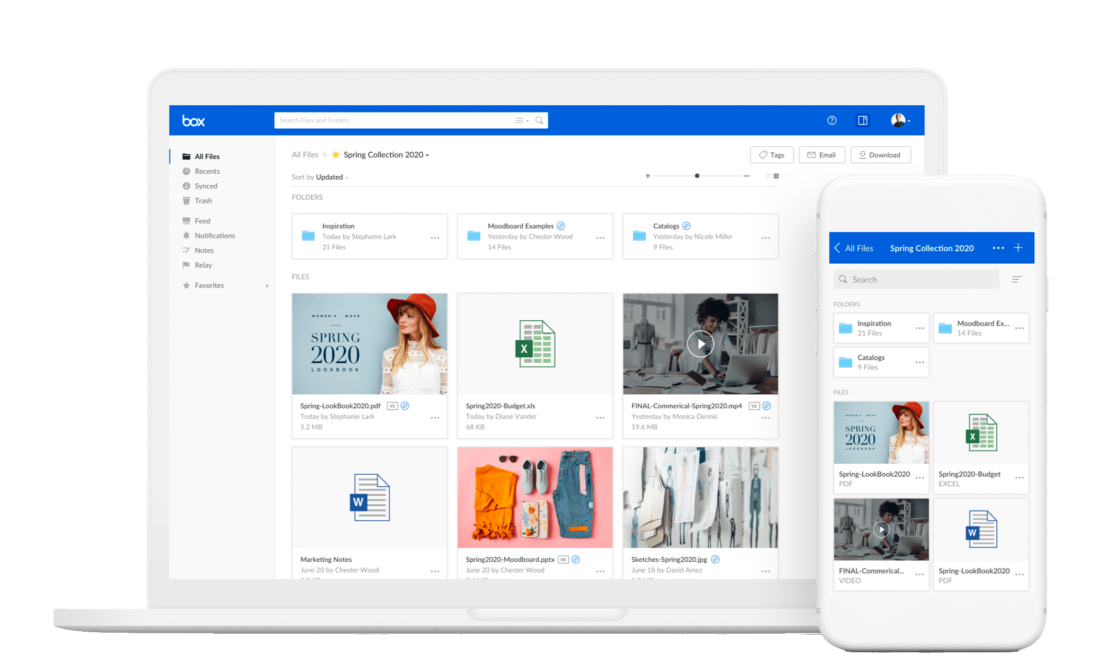
Image Source: Box
- Conferencing
Twenty years ago, a conference meant expenses for airfare and accommodations to get the whole company together.
Today, with video conferencing apps, like Zoom, Skype for Business, and GoTo Meeting, you can connect everyone digitally from wherever they’re located. These apps can help foster collaboration by creating the feeling of being in the same room, without being in the same room.
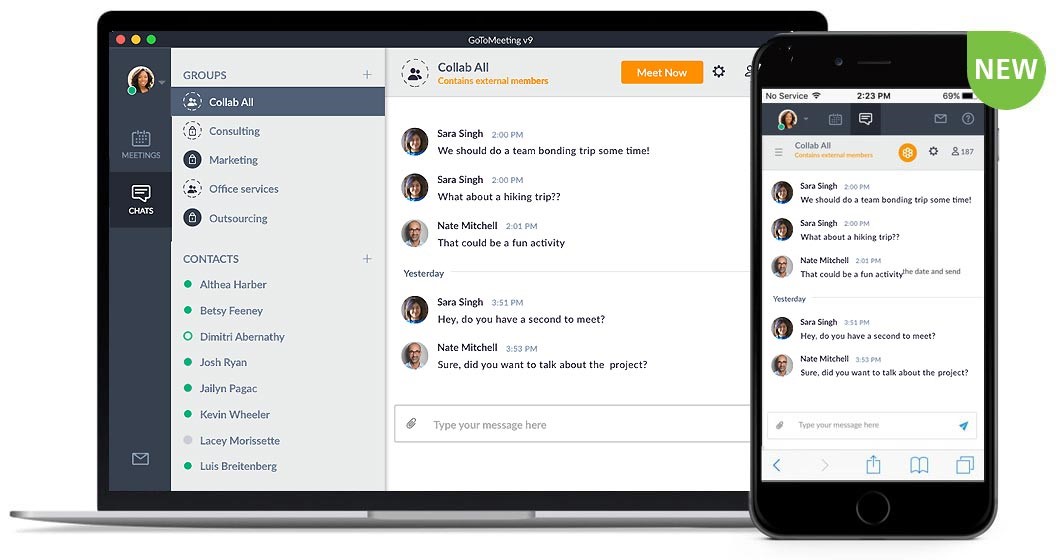
Image Source: GoToMeeting
- Collaboration
To facilitate those “water cooler” conversations we discussed earlier, leverage chat tools like Slack, Monday, and Google Hangouts. Users can freely engage coworkers across the globe, the country, or even across the room to ask questions, get advice in real time, or just update others on their weekend activities.

Image Source: Google Hangouts
- Email Marketing
Use email as your consistent, always-available brand ambassador for everything from welcome emails to transactional messages.
Employ an email automation platform, like Emma HQ, to manage marketing efforts across multiple locations and to schedule event-based messaging, like thank you emails for website interactions, post-purchase instructions, or lead nurturing.

Image Source: MyEmma
- Human resources
For recruiting and managing workers, there are a variety of cloud-based tools to employ. Starting with recruiting, browse online resume banks like LinkedIn, Indeed, and ZipRecruiter to search existing resumes. If your ideal candidate isn’t already there, you can also use these platforms to post your openings.
In the hiring process, you can implement online tools like Docusign to exchange confidential documents for signatures on employment contracts and tax forms. A good hris like that offered by Sapling helps make all other systems run more efficiently and allows employees to update their own information as needed, thus reducing the burden on HR managers.
When it’s time to onboard, you can load your training materials, required OSHA (Occupational Safety and Health Administration) handling instructions, and discrimination and sexual harassment training into an online learning platform. For this, explore apps like Litmos, Zunos, or Talent LMS.
Using a cloud-based learning platform ensures that every employee gets the same information with a mechanism to confirm receipt or to provide tests confirmation on understanding.
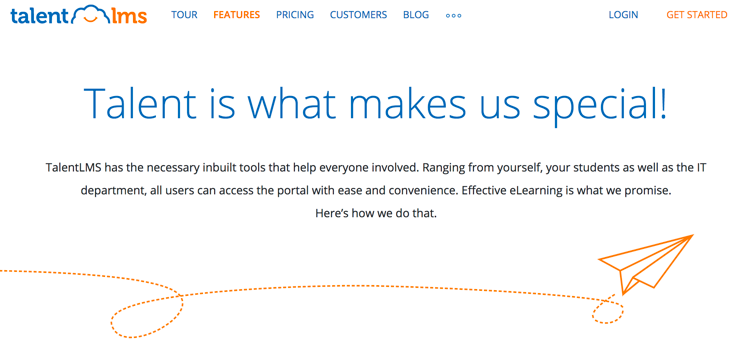
Image Source: Talent LMS
Wrap up
The decision to expand your business isn’t one to take lightly. Use the advice and tool suggestions in this article to plan for expansion, while still maintaining business consistency and team spirit.
Take the time to understand what goes into managing businesses with multiple locations, and then you can dedicate yourself to master those skills.
Before you know it, you’ll be using multi-location marketing and optimization strategies more than ever.
All you have to do is take that first leap, and then opening up location number three, four, and beyond will be a breeze.


